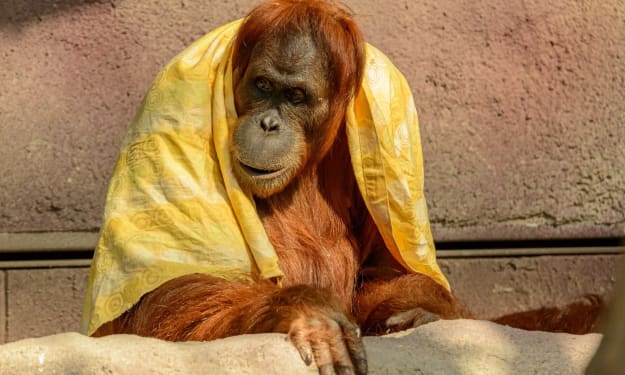History Of Chinese Traditional Opera
How Chinese Traditional Opera evolved

Since the Tang Dynasty's Emperor Xuanzong from 712 to 755 - that made the first nationwide opera troupe known as the" Pear Garden" - Chinese opera has been among the most common forms of entertainment in the nation. Still, it started almost a century before in the Yellow River Valley during the Qin Dynasty.
Now, over a century after Xuanzong's passing, It's appreciated by political leaders and commoners alike in several intriguing and innovative ways, and Chinese opera actors are still Known as" Disciples of the Pear Garden," continued to Execute an astounding 368 Distinct types of Chinese opera.
Early Development
Lots of the characteristics that characterize contemporary Chinese opera developed in northern China, especially in the Shanxi and Gansu Provinces, for example, use of particular set characters such as Sheng (the guy ), Dan (the girl ), Hua (the painted facial ) and Chou (the clown). Back in Yuan Dynasty occasions - from 1279 to 1368 - stunt actors started to use ordinary individuals' vernacular language instead of traditional Chinese.
Throughout the Ming Dynasty - from 1368 to 1644 - along with the Qing Dynasty - from 1644 to 1911 - both the northern standard singing and play fashion from Shanxi was united with melodies from a southern type of Chinese opera known as" Kunqu." This form Was Made from the Wu area, across the Yangtze River. Kunqu Opera revolves around the Kunshan melody, made from the coastal town of Kunshan.
Several of the most well-known operas which are still played today are out of the Kunqu Concept, such as" The Peony Pavilion," The Peach Blossom Fan," along with adaptations of this elderly" Romance of the Three Kingdoms" and" Journey to the West." On the other hand, the tales are left into different regional dialects, including Mandarin for crowds in Beijing and other northern towns. In addition to costumes and makeup traditions, the singing and acting methods also owe much to the north Qinqiang or even Shanxi tradition.
Hundred Flowers Campaign
This rich operatic legacy was lost throughout China's dark times in the mid-twentieth century. The Popular Communist regime of the People's Republic of China - from 1949 to current initially encouraged the creation and operation of operas new and old.
Throughout the" Hundred Flowers Campaign" in 1956 and'57 - where the government under Mao invited intellectualism, the arts as well as criticism of the authorities - Chinese stunt blossomed anew. However, the Hundred Flowers Campaign Might Have Been a snare.
From December of that same year, a gorgeous 300,000 people have tagged "rightists" and have been subjected to punishments from casual criticism to internment in labour camps or even implementation. This is a record of the horrors of the Cultural Revolution of 1966 through 1976, which could imperil the very presence of Chinese opera and other traditional arts.
Cultural Revolution
The Cultural Revolution has been the regime's effort to ruin" old methods of thinking" by outlawing such customs as fortune-telling, paper-making, traditional Chinese apparel and the analysis of classic arts and literature.
An attack on a single Beijing opera piece and its composer indicated the beginning of the Cultural Revolution. Back in 1960, Mao's government had commissioned Professor Wu Han to compose an opera about Hai Rui, a minister of the Ming Dynasty. He had been fired for criticizing the Emperor into his face.
Audiences watched the drama for a review of the Emperor - and consequently Mao - instead of Hai Rui representing disgraced Minister of Defense Peng Dehuai. In response, Mao played an about-face at 1965, releasing harsh criticism of this stunt and composer Wu Han, who was finally terminated.
For the next ten years, opera troupes were disbanded, other composers and scriptwriters were purged, and performances were prohibited. Until the collapse of the" Gang of Four" in 1976, just eight" model operas" were permitted. These version operas were vetted by Madame Jiang Qing and so were entirely politically innocuous. In nature, Chinese stunt was lifeless.
Modern Chinese Opera
Following 1976, Beijing opera and other types had been revived and put inside the federal ministry. Older actors who'd survived the purges were permitted to pass their understanding to new pupils.
Traditional operas have been publicly performed since 1976, although some more unique functions are censored and fresh composers criticized because the political winds have changed over the decades. Chinese opera makeup is fascinating and full of meaning. A character with mainly reddish makeup or a crimson mask is courageous and loyal. Black signifies boldness and impartiality.
Yellow denotes vision, whilst pink stands for elegance and cool-headedness. Characters with mostly blue faces are ferocious and far-seeing, while green faces reveal wild and spontaneous behaviours. People that have white faces are adorable and laborious - the villains of this series. At length, a celebrity with just a little cosmetics section at the middle of their face, linking the nose and eyes, is a clown. This is known as"xiaohualian," and also the" small painted confront ."
Today, over fifty kinds of Chinese opera continue to be performed frequently around the nation. The magnificent art form called Beijing opera - or Peking opera - was a staple of Chinese amusement for at least two centuries. Some 40 decades later, famous opera troupes from Hubei combined the Anhui actors, melding their regional fashions.
The Hubei and Anhui opera troupes utilized two principal melodies adapted from the Shanxi musical heritage: "Xipi" and" Erhuang." From that amalgam of local fashions, the new Peking or Beijing Programmer developed.
Beijing Opera
Now, Beijing Opera is known as China's national art form. Beijing Opera is famous for elaborate plots, vibrant cosmetics, exquisite costumes and sets, and the distinctive vocal style used by actors. Many of those 1,000 plots - not surprisingly - revolve around military and political strife, instead of romance. The real stories tend to be hundreds or maybe thousands of years involving historical and supernatural beings. Many lovers of Beijing Opera are concerned about the destiny of the art form. The conventional plays refer to many details of pre-Cultural Revolution history and life unfamiliar with young individuals.
What's more, lots of the stylized movements have a specific significance which could be dropped on uninitiated crowds. Most upsetting of all, operas should compete with movies, TV shows, computer games, and the web for focus. The Chinese government is utilizing grants and competitions to encourage young musicians to take part in the Beijing Opera.
Shanghai (Huju) Opera
Shanghai Programmer (Huju) originated at about precisely the same period as Beijing opera, approximately 200 decades back. On the other hand, the Shanghai edition of opera relies on the Huangpu River area's neighbourhood folk-songs instead of deriving from Anhui and Shanxi. To put it differently, an individual from Beijing might not see the lyrics of a Huju piece.
As a result of the relatively recent nature of the tales and songs which make up Huju, the costumes and cosmetics are relatively straightforward and contemporary. Shanghai opera actors wear outfits that resemble the road clothes of ordinary folks in the pre-communist age.
Their makeup isn't much more complicated than that worn with western point celebrities, in stark contrast with the significant and heavy grease-paint employed in other Chinese Opera forms. Huju had its heyday from the 1920s and 1930s. A number of the songs and stories of the Shanghai area show a specific western influence.
This isn't surprising, given the significant European forces maintained trading concessions and consular offices in the booming port city, before World War II. Like most of the other regional rainbow fashions, Huju is at risk of disappearing forever. Few young celebrities take the art form as there's considerably greater fame and fortune to be had in films, TV, and Beijing Opera.
Contrary to Beijing Opera, which is now regarded as a national art form, Shanghai Opera is done in a local dialect and doesn't translate well to other states. Nonetheless, the city of Shanghai has countless inhabitants, with thousands more in the close area. If a concerted try is made to introduce the younger audiences into this intriguing art form, Huju may endure pleasure theatregoers for centuries ahead.
Most kinds of Chinese opera spend their acting and singing styles, a number of the melodies, and plotlines into the musically fertile Shanxi province, using its thousand-year-old Qinqiang or even Luantan folk melodies. This early form of artwork first appeared at the Yellow River Valley throughout the Qin Dynasty from B.C. 221 to 206 and has been popularized in the Imperial Court at modern-day Xian throughout the Tang Era spanned from 618 to 907 A.D.
Shanxi Opera (Qinqiang)
The Imperial audiences so appreciated Shanxi singing the form was integrated into Beijing Opera, which is presently a national artistic fashion. Previously, the repertoire of Qinqiang comprised over 10,000 operas; now, just about 4,700 of these are recalled.
The arias in Qinqiang Opera are split into two different types: Huan yin, or" joyous song," and Ku yin, or" sorrowful song" Plots in Shanxi Opera frequently deal with battling oppression, wars against the northern barbarians, and problems of devotion. A few Shanxi Opera productions incorporate special effects like fire-breathing or acrobatic twirling, along with the typical operatic singing and acting.
Cantonese Opera
Cantonese Opera, located in southern China and international ethnic Chinese communities, is a formalized operatic form that highlights gymnastic and martial arts abilities. This Kind of Chinese Opera predominates in Guangdong, Hong Kong, Macau, Singapore, Malaysia, and Chinese-influenced regions in western states
. According to the old Chinese Opera, Cantonese Opera started to incorporate local folk melodies, Cantonese instrumentation, and even Western popular songs. Along with traditional Chinese instruments like the pipa, erhu, and percussion, contemporary Cantonese Opera productions might consist of such Western instruments as the violin, cello, and saxophone. Two distinct kinds of plays compose the Cantonese Opera repertoire - Mo, meaning" martial arts," and Mun, or" intellectual" - wherein the melodies are entirely secondary to the lyrics.
Mo performances are fast-paced, involving tales of war, bravery and betrayal. The celebrities frequently carry weapons like props and fancy costumes might be as hefty as real armour. Mun, on the other hand, will be a slower, more considerate art form. One noteworthy characteristic of Cantonese Opera is your makeup. It's one of the very intricate makeup systems in most Chinese Opera, using various shades of colour and shapes, especially on the forehead, signalling the psychological condition, trustworthiness, and bodily wellbeing of these figures. By way of instance, invalid characters possess a thin red line drawn between the eyebrows, whereas funny or clownish characters possess a large white spot on their nose's bridge.
A few Cantonese Operas also have celebrities in" open face" makeup, which can be so complicated and complex that it looks like a painted mask greater than a face. Now, Hong Kong is in the middle of attempts to maintain Cantonese Opera living and flourishing.
The famous Hong Kong Academy for the Performing Arts provides two-year levels in Cantonese Opera functionality and the Arts Development Council sponsors opera courses for the town's kids. This special and intricate type of Chinese Opera may continue to get an audience for a long time to come through such a joint effort.
About the Creator
Fahim Chughtai
Mental Health, Personal growth, Relationships.






Comments
There are no comments for this story
Be the first to respond and start the conversation.